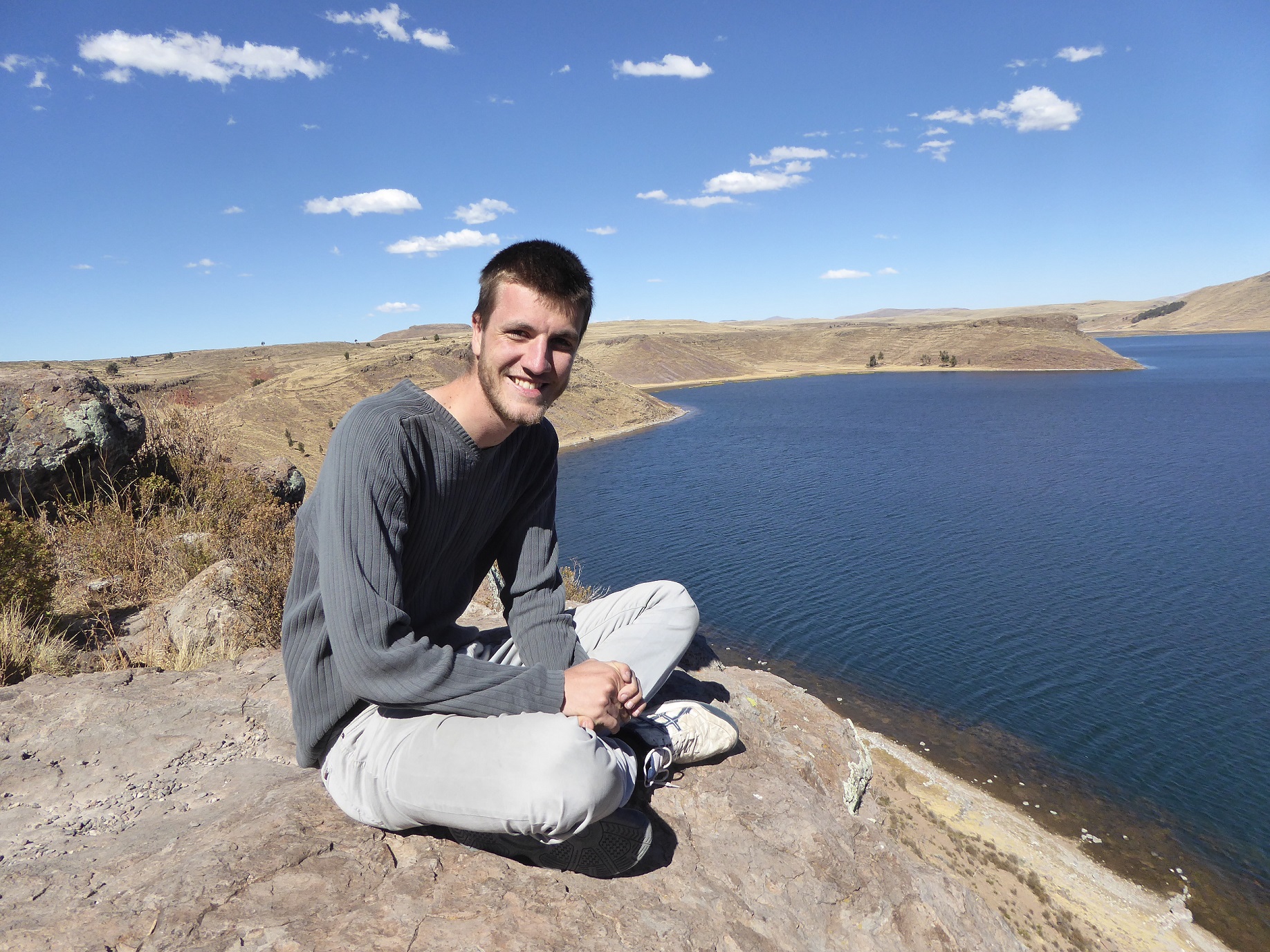Paul Baville

Postdoc (Since 01/2023) • General Geology (KIT • AGW)
Topic: Impact of superficial erosion on stratigraphic records of slab break-off signal in sedimentary succession using forward stratigraphic modeling.
Postdoc Advisor
Jun. Prof. Nevena(Andrić-)Tomašević (KIT • AGW)
Postdoc (05/2022 - 12/2022) • RING Team (UL • GeoRessources)
Topic: Confronting multiple scenarios of sedimentary basin depositional setting using computer-assisted multi-well correlations.
Postdoc Advisor
Prof. Guillaume Caumon (Univ. Lorraine)
PhD Thesis (2019 – 2022) • RING Team (UL • GeoRessources)
Title: Stratigraphic correlation uncertainties: On the impact of the sediment transport direction in computer-assisted multi-well correlation
Titre: Les incertitudes des corrélations stratigraphiques : À propos de l'impact de la direction de transport des sédiments sur les corrélations multi-puits assistées par ordinateur
PhD Director
Prof. Guillaume Caumon (Univ. Lorraine)
PhD Co-Directors
Prof. Cédric Carpentier (Univ. Lorraine) & Dr. Marcus Apel (Equinor ASA)
PhD Steering committee
Pr.of Antoine Tabbone (Univ. Lorraine) & Dr. Dirk Knaust (Equinor ASA)
PhD Defense committee
Examiners: Prof. Jean Borgomano (Univ. Aix-Marseille) & Dr. Sophie Leleu (Univ. Bordeaux)
Reviewers: Prof. Andrea Moscariello (Univ. Geneva) & Dr. Cécile Robin (Univ. Rennes)
External guests: Dr. Silvan Hoth (Equinor ASA) & Dr. Dirk Knaust (Equinor ASA)
MSc Thesis (2017 – 2018) • RING Team (UL • GeoRessources)
Title: Stochastic detection of transgressive and regressive sequences from well-log data using discrete wavelet transform: first results
Supervisor
Prof. Guillaume Caumon (Univ. Lorraine)
Research Topics:
Stratigraphic Sequences Stochastic Simulation for Well stratigraphic interpretation •S4Wells
Maximum Flooding Surfaces (MFS) correspond to the most marine depositional conditions and may be interpreted from the gamma ray (GR). Assuming that the GR is a proxy of the relative sea level, high values of GR correspond to deepest depositional conditions, and low values of GR correspond to shallowest depositional conditions.
A multi-scale GR analysis leads to the computation of a probability of finding a MFS at each depth of GR acquirement using:
The Discrete Wavelet Transform (DWT) → Stochastic detection of transgressive and regressive sequences from well-log data using discrete wavelet transform: first results.
The Continuous Wavelet Transform (CWT) → Stochastic simulation of stratigraphic sequences from well log data using continuous wavelet transforms.
Once the probability is computed, MFS may be stochastically simulated to assess uncertainties of stratigraphic sequence interface position along wells.
Computer-assisted Chronostratigraphic Multi-Well Correlation • WeCo
Well correlation based on facies interpretations and paleo-distality. Markers are associated if they are consistent with depositional environments. Along the structural strike direction, chronostratigraphy tends to associate similar facies. At the opposite, along the structural dip direction, proximal shallow facies are associated with distal deep facies, other associations are excluded.
Well correlation based on facies interpretations and dipmeter data. Chronostratigraphic surfaces are simulated between well markers using Bézier cubic interpolations. All possible interpolations are compared with a theoretical depositional profile and the smaller the variation, the higher the likelihood.
Dipmeter Data Stochastic Simulation from 4-Directional Resistivity Log
Using the Dynamic Time Warping (DTW) to correlate four-directional resistivity logs, it is possible to associate resistivity markers minimizing the variance. Once markers associated, it is possible to compute dips and dip directions for each marker associations.
Bayesian updating of horizontal well trajectory while drilling • GeoSteeRING:
Magnetostratigraphic time-to-depth multi-well correlation • Cupydon
IAMG Student Chapter Seminaries / Webinars
11/16/2021 • Computer-assisted stochastic multi-well correlation: surface interpolation vs depositional profile.
04/01/2021 • Discussion about the computation of the volume between two parametric triangular surfaces.
01/14/2021 • IAMG Student Chapter Presentation (with Capucine Legentil).
10/15/2020 • Multi-Well Correlation based on Dipmeter data.
07/01/2020 • Surface Interpolation (with Capucine Legentil).
11/21/2019 • Multi-Well Correlation based on Facies Interpretation.
05/23/2019 • From Well Log to Stratigraphic Layering: Automation, Uncertainties and Impact on Reservoir Behavior.
02/14/2019 • Dynamic Time Warping in Stochastic Multi-Well Correlations.
RING Consortium Seminaries / Webinars
03/09/2021 • Multi-Well Correlation - Facies versus Distality
Achievements (2019 - 2020):
- Computer-assisted multi-well stochastic correlations: Chronostratigraphic surface simulation using Bézier cubic interpolations
- Magnetostratigraphic time-to-depth multi-well correlation using the Dynamic Time Warping on well-log data.
- Facies correlation based on lithostratigraphic, and chronostratigraphic associations based on the paleo-environment (transport direction, paleo-depth, paleo-distality ...) using Dynamic Time Warping on well-log data.
Achievements (2018 - 2019):
- Stochastic detection of stratigraphic sequences from well data (Gamma Ray log) using discrete wavelet transform (Haar functions).
- Sedimentological interpretation of well core samples and creation of different well logs based on these different interpretations (Petrophysical facies, genetic facies …) + parasequence interpretations.
- Facies transition probability computation to constraint stochastic correlations using observed data.
- Stochastic multi-well correlation from well data (Gamma Ray log + genetic facies interpretation on core samples) using Dynamic Time Warping algorithm to compute the n-best correlations.
Contact Information
| E-Mail : | This email address is being protected from spambots. You need JavaScript enabled to view it. |
| Cell: | +33 667 670 958 |
| ENSG office number: | G208B |
| Personal Web Site: | https://www.linkedin.com/in/paulbaville/ |

